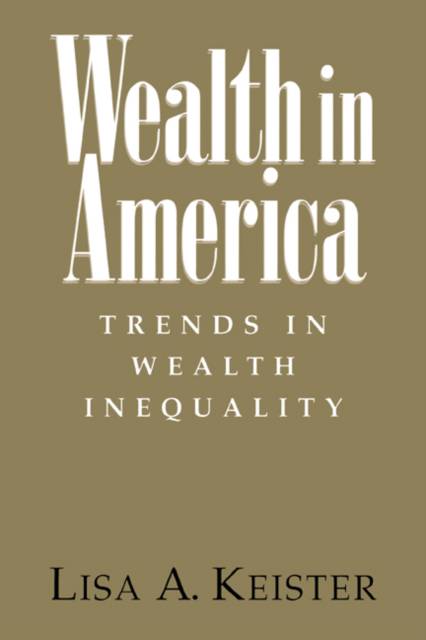
- Afhalen na 1 uur in een winkel met voorraad
- Gratis thuislevering in België vanaf € 30
- Ruim aanbod met 7 miljoen producten
- Afhalen na 1 uur in een winkel met voorraad
- Gratis thuislevering in België vanaf € 30
- Ruim aanbod met 7 miljoen producten
Zoeken
€ 56,45
+ 112 punten
Uitvoering
Omschrijving
Wealth ownership in the United States has long been concentrated in the hands of a small minority of the population. Because of scarce data on wealth ownership, the nature of wealth ownership distribution and knowledge about wealth inequality has received relatively little attention from social scientists. Keister synthesizes theory and data from various sources to present a detailed picture of household wealth distribution from 1962-1995. Utilizing existing survey data and a unique simulation model, the author isolates and examines processes that create this distribution, paying particular attention to the wealth ownership and accumulation of top wealth holders, those who control the bulk of household wealth. The results underscore the importance of wealth as an indicator of well-being, identify important causes of wealth inequality, and propose methods of lessening the recent increase in the concentration of wealth.
Specificaties
Betrokkenen
- Auteur(s):
- Uitgeverij:
Inhoud
- Aantal bladzijden:
- 320
- Taal:
- Engels
Eigenschappen
- Productcode (EAN):
- 9780521627511
- Verschijningsdatum:
- 19/06/2000
- Uitvoering:
- Paperback
- Formaat:
- Trade paperback (VS)
- Afmetingen:
- 153 mm x 229 mm
- Gewicht:
- 430 g

Alleen bij Standaard Boekhandel
+ 112 punten op je klantenkaart van Standaard Boekhandel
Beoordelingen
We publiceren alleen reviews die voldoen aan de voorwaarden voor reviews. Bekijk onze voorwaarden voor reviews.











